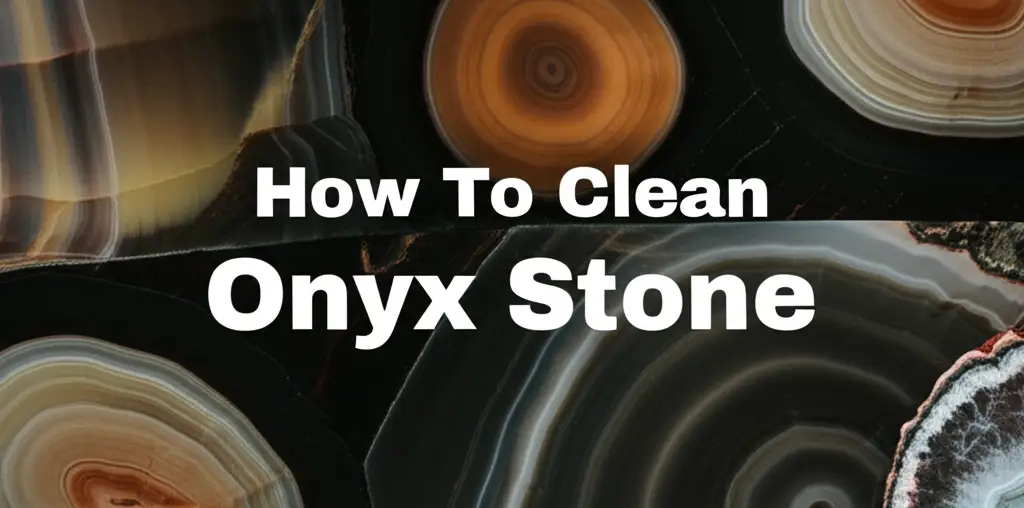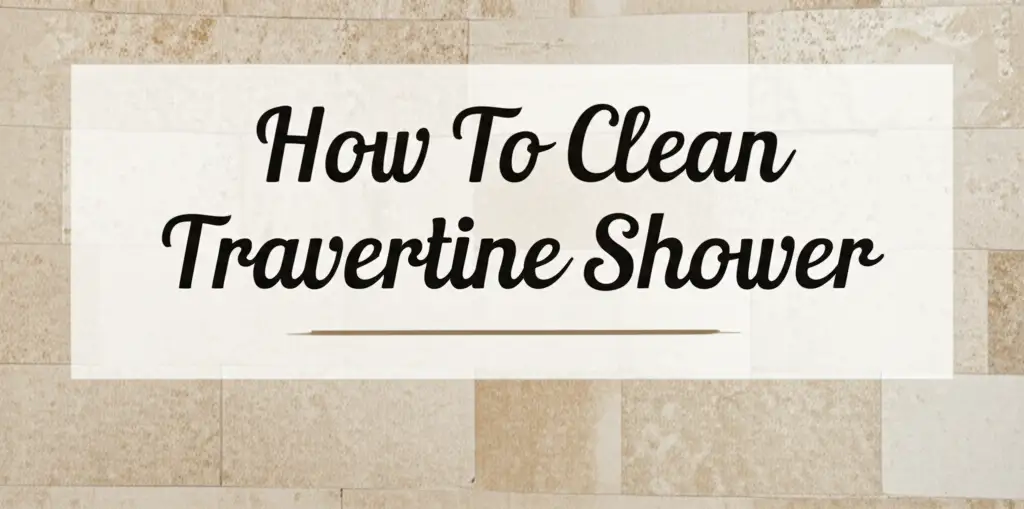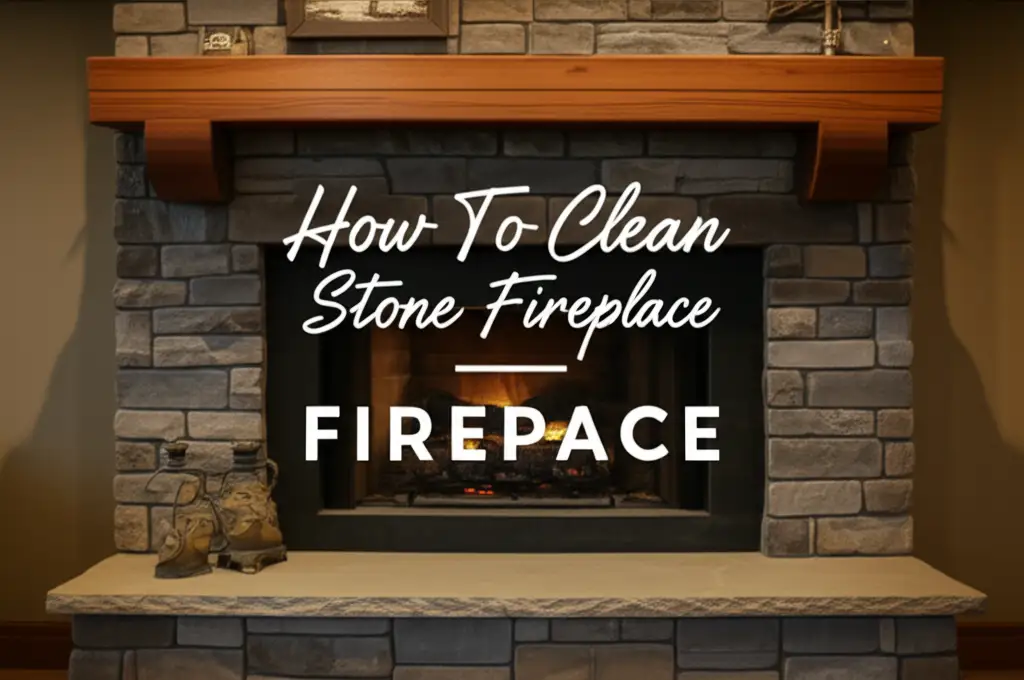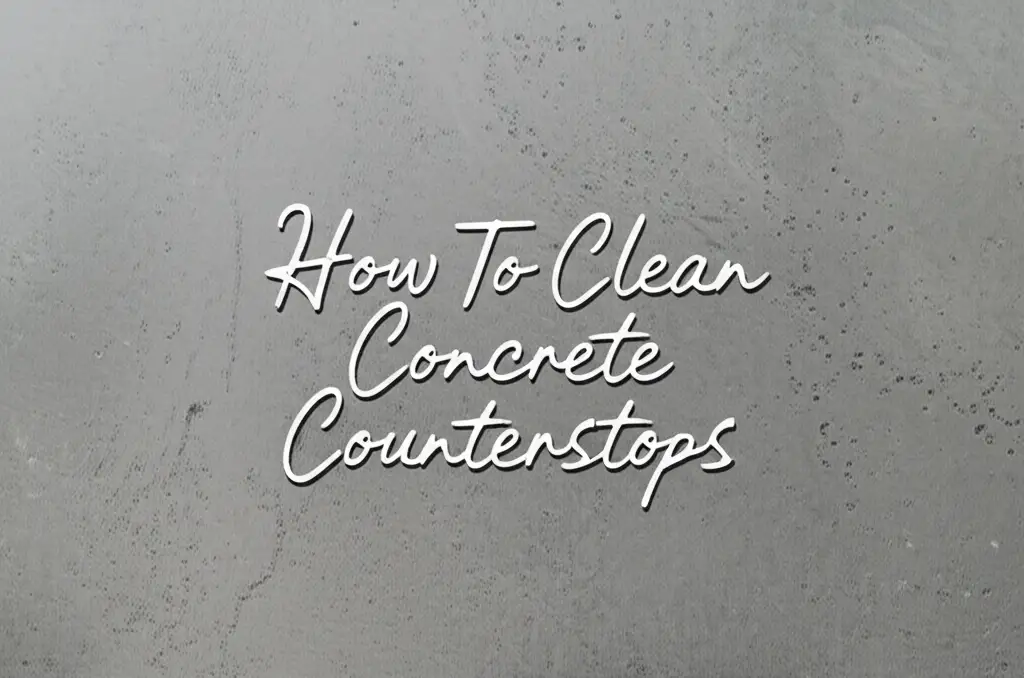· Home Cleaning · 14 min read
How To Clean Onyx Stone

Unlock the Shine: How To Clean Onyx Stone Safely
Onyx stone captures attention with its unique translucence and striking patterns. It brings a touch of natural beauty to any space. Many people use it for countertops, wall panels, or decorative items. Keeping this delicate stone clean is important. Proper care ensures its lasting beauty.
If you own onyx, you know it needs special attention. Harsh cleaners or rough methods can easily damage its surface. You need to use gentle products and techniques. This guide shows you exactly how to clean onyx stone. We cover everything from daily dusting to deep stain removal. We also discuss important protection tips. You will learn the best ways to care for your precious onyx.
Takeaway:
- Always use gentle, pH-neutral cleaners for onyx.
- Avoid abrasive tools, harsh chemicals, and acidic solutions.
- Blot spills immediately to prevent staining.
- Seal onyx regularly to protect its surface.
- Perform routine dusting and wiping for daily care.
How do you clean onyx stone?
To clean onyx stone, use a soft, damp cloth and a pH-neutral stone cleaner or mild dish soap diluted in warm water. Gently wipe the surface to remove dirt and grime. Rinse with a clean, damp cloth and dry immediately with a soft, lint-free towel to prevent water spots and maintain its natural luster.
Understanding Onyx: A Delicate Beauty
Onyx is a form of quartz. It forms in layers. This layering creates its beautiful, banded appearance. Onyx is a unique and porous stone. It is softer than many other natural stones. This means it needs gentle handling.
Onyx is also sensitive to acids. Even common household items like lemon juice or vinegar can etch its surface. This causes dull spots. Its porous nature makes it prone to staining. Liquids can soak in quickly. Understanding these properties helps you care for your onyx well. Knowing what onyx is helps you clean it properly.
What Makes Onyx Unique?
Onyx stands out from other stones. Its translucency allows light to pass through it. This creates a stunning visual effect. People often use onyx for backlit features. This highlights its natural patterns. Because it is soft, it scratches more easily than granite or marble. Its porosity means it absorbs liquids readily. This requires quick clean-up of spills. I find that this delicate nature makes it feel even more special to own. You must be careful with it.
This stone requires specific cleaning methods. You cannot treat it like ceramic tile. Harsh scrubbing or strong chemicals will harm it. We need to respect its unique properties. Only then can we keep its beauty intact. This care ensures onyx remains a focal point in your home. It can last for many years with proper cleaning and maintenance.
Essential Tools and Supplies for Cleaning Onyx
Before you begin cleaning your onyx, gather the right tools. Using the correct supplies prevents damage. You want to be gentle with this stone. I always make sure I have everything ready before I start. This saves time and ensures a smooth cleaning process.
The basic cleaning kit for onyx is simple. You likely have most of these items already. They are soft and non-abrasive. This is important for preserving the stone’s delicate surface. Never use harsh scrubbers. Avoid anything that could scratch the onyx.
The Gentle Arsenal
Here is a list of what you will need:
- Soft cloths: Microfiber cloths are ideal. They are very gentle and absorbent. You will need a few of these.
- Warm water: Plain warm water is the base for most onyx cleaning.
- pH-neutral stone cleaner: Look for products specifically designed for natural stone. These cleaners will not harm the onyx. Many general-purpose cleaners are too acidic or alkaline.
- Mild dish soap: As an alternative, a very small amount of mild, non-abrasive dish soap works. Ensure it is dye-free.
- Spray bottle (optional): This helps mix and apply cleaning solutions evenly.
- Sealer: A natural stone sealer protects onyx from stains. You will need to apply this periodically.
Avoid rough sponges or abrasive pads. Do not use powdered cleansers. Never use acidic cleaners like vinegar or lemon juice. These items will etch or dull the onyx. Using the right tools protects your investment.
Step-by-Step Guide: Daily and Light Cleaning for Onyx
Regular cleaning is crucial for onyx. It prevents dirt buildup and maintains its shine. Daily care is simple and quick. It keeps your onyx looking its best. I make sure to do these steps often. This avoids bigger cleaning jobs later.
For light cleaning, you do not need many supplies. Just a soft cloth and some water. This method removes dust and light spills. It is perfect for countertops or decorative items. Remember, consistency is key with onyx.
Simple Steps for Routine Shine
Follow these steps for everyday cleaning:
- Dust the surface: Use a dry, soft microfiber cloth to wipe away loose dust and debris. Do this gently.
- Prepare the cleaning solution: Mix a small amount of pH-neutral stone cleaner with warm water. Follow the product’s instructions for dilution. If using dish soap, add just a few drops to a bucket of warm water.
- Dampen a cloth: Dip a clean microfiber cloth into the solution. Wring it out thoroughly. The cloth should be damp, not soaking wet. Excess water can penetrate porous onyx.
- Wipe the onyx: Gently wipe down the entire onyx surface. Use smooth, even strokes. Do not scrub hard. Pay attention to any visible smudges or spills.
- Rinse the surface: Take another clean cloth. Dampen it with plain warm water. Wipe the onyx again to remove any soap residue.
- Dry completely: Use a separate, dry microfiber cloth. Buff the onyx until it is completely dry. This prevents water spots and streaks.
This routine keeps your onyx sparkling. It also prepares the surface for sealing. For larger stone surfaces like floors, these principles apply, but on a larger scale. Learn more about how to clean a stone floor for similar considerations. Proper drying is vital for any natural stone.
Tackling Deeper Stains and Spills on Onyx
Despite regular cleaning, spills and stains can happen. Onyx is porous, so liquids can soak in quickly. Acting fast is important. The longer a spill sits, the harder it is to remove. I always keep my cleaning supplies handy for quick action.
When dealing with stains, never use abrasive methods. Do not scrub harshly. This can scratch the surface. Instead, use a gentle, targeted approach. Different types of stains may need different treatments. Understanding the stain helps you choose the right method.
Addressing Common Stains
Here’s how to handle various spills and stains on onyx:
- Fresh Spills: Blot them immediately with a soft, dry cloth. Do not wipe. Wiping can spread the spill. Follow up with your daily cleaning routine if residue remains.
- Food and Beverage Stains (Coffee, Tea, Wine):
- Make a poultice. Mix a mild abrasive, like baking soda or unbleached flour, with hydrogen peroxide to form a thick paste.
- Apply the paste thickly over the stain.
- Cover it with plastic wrap and tape the edges down.
- Let it sit for 24-48 hours. The poultice draws the stain out.
- Remove the paste, rinse the area with clean water, and dry. You may need to repeat this.
- Oil-Based Stains (Grease, Cooking Oil):
- Create a poultice using a mild abrasive (like cornstarch) mixed with rubbing alcohol or acetone.
- Apply as described above. Let it sit for several hours or overnight.
- Remove, rinse, and dry.
- Water Spots/Hard Water Stains:
- These can be tricky on onyx because of its sensitivity to acids.
- Use a soft cloth dampened with distilled water.
- Gently rub the spot. If it persists, use a very mild, pH-neutral stone cleaner.
- Avoid acidic descalers.
- Mold or Mildew Stains:
- Mix a small amount of household bleach (ensure it’s not colored or scented) with water (1:1 ratio).
- Apply carefully with a cotton swab or very soft cloth.
- Do not let it sit for long. Rinse immediately and thoroughly.
- For general mold removal on natural stone, you can also look into methods for how to clean mold off natural stone.
Always test any new cleaning agent or poultice in an inconspicuous area first. This ensures it does not damage the onyx. Patience is key when removing stubborn stains.
Protecting Your Onyx: Sealing and Prevention Tips
Cleaning onyx regularly is important. Protecting it is equally vital. Onyx is porous, meaning it has tiny openings. These openings can absorb liquids. This absorption causes stains. Sealing your onyx prevents this. It creates a barrier on the surface.
Think of sealing as adding a protective shield. This shield makes the stone less absorbent. It gives you more time to clean up spills. Without sealing, even water can leave marks. I always recommend sealing onyx. It saves a lot of trouble in the long run.
The Importance of Sealing
A stone sealer penetrates the onyx. It fills the microscopic pores. This prevents liquids from soaking in. Sealers do not make the stone waterproof. They just make it more resistant to staining. You still need to clean up spills quickly. Sealing also helps maintain the stone’s luster.
Here’s how to seal your onyx:
- Clean the onyx: Ensure the surface is completely clean and dry. Any dirt or residue will be sealed in.
- Choose the right sealer: Use a high-quality impregnating sealer specifically for natural stone. These sealers penetrate the stone. They do not just sit on top.
- Apply the sealer: Follow the product instructions carefully. Typically, you apply the sealer with a clean, lint-free cloth. Work in small sections.
- Allow to penetrate: Let the sealer sit for the recommended time. This allows it to soak into the stone.
- Wipe off excess: Use a clean, dry cloth to wipe off any excess sealer. Do not let it dry on the surface. This can leave a haze.
- Cure time: Allow the sealer to cure fully. This can take 24-72 hours. Avoid using the surface during this time.
Reapply sealer periodically. Most onyx needs sealing every 6-12 months. Test for water absorption. If water darkens the stone surface, it is time to reseal. Other stone surfaces like natural stone tile and grout also benefit from sealing.
Preventative measures also help:
- Use coasters and placemats: Always place drinks and hot items on coasters. Use placemats under dishes on countertops.
- Wipe spills immediately: Never let spills sit on onyx. Blot them up at once.
- Use cutting boards: Do not cut directly on onyx. Use a separate cutting board.
- Avoid dragging objects: Lift heavy or rough objects. Do not drag them across the surface. This prevents scratches.
These simple habits extend the life and beauty of your onyx.
Cleaning Different Onyx Applications
Onyx comes in many forms. You might have onyx countertops, a decorative sculpture, or a piece of jewelry. Each application might require slightly different handling. The core principles remain the same: be gentle, use pH-neutral cleaners, and dry thoroughly.
I’ve seen onyx used in surprising places, from tabletops to light fixtures. Adapting your cleaning approach to the specific item is helpful. Knowing the context ensures you clean effectively without causing harm.
Onyx Countertops & Surfaces
Onyx countertops are stunning but vulnerable. They see a lot of activity. Daily cleaning is essential here.
- Routine: Wipe spills immediately. Use a soft, damp cloth with pH-neutral cleaner daily. Dry completely to prevent water spots.
- Prevention: Always use cutting boards. Place hot pads under hot dishes. Use coasters under glasses. Avoid placing acidic foods directly on the surface. This includes citrus fruits, vinegar, and tomatoes.
- Sealing: Countertops need regular sealing due to frequent use. Check the sealer every 6-12 months.
- Deep Cleaning: If stains occur, follow the poultice methods mentioned earlier. For general stone surfaces like exterior stone on a house, the concept of gentle care and appropriate cleaners still applies, though the scale differs.
Onyx Jewelry & Small Items
Onyx jewelry is beautiful. It also needs gentle care. These items are often small and delicate.
- Cleaning Method:
- Fill a small bowl with warm water and a tiny drop of mild, pH-neutral dish soap.
- Dip a very soft cloth (like a jewelry cloth) into the solution. Wring it out well.
- Gently wipe the onyx piece. Pay attention to crevices.
- Use a clean, damp cloth to rinse off soap residue.
- Dry thoroughly with a lint-free cloth.
- Avoid Soaking: Do not soak onyx jewelry. Water can get into settings and cause issues. Prolonged exposure can also weaken some natural stones.
- Storage: Store onyx jewelry separately. This prevents scratches from harder stones or metals. Keep it in a soft pouch or a lined jewelry box.
- Chemical Exposure: Keep jewelry away from harsh chemicals. This includes perfumes, hairsprays, and lotions. Apply these products before putting on your onyx jewelry.
Whether cleaning a large countertop or a small pendant, always prioritize gentleness and proper drying.
What NOT to Use: Avoiding Damage to Onyx
Just as important as knowing what to use is knowing what to avoid. Onyx is a delicate material. Many common cleaners can cause irreversible damage. Using the wrong product can etch, dull, or stain the stone. This ruins its natural beauty.
I have seen people accidentally ruin beautiful onyx pieces. They used cleaners that were too harsh. It is easy to make this mistake if you do not know about onyx’s sensitivity. Always read cleaner labels carefully. If a product does not say it is safe for natural stone, do not use it.
Chemicals to Shun
Here is a list of substances and tools you must keep away from onyx:
- Acidic Cleaners:
- Vinegar (acetic acid)
- Lemon juice or citrus-based cleaners (citric acid)
- Toilet bowl cleaners
- Rust removers
- Grout cleaners (many are acidic)
- These will etch the onyx surface. This creates dull, rough spots.
- Alkaline Cleaners:
- Ammonia-based cleaners (e.g., Windex)
- Bleach (unless heavily diluted and used very briefly for mold/mildew, with caution)
- Oven cleaners
- Heavy-duty degreasers
- These can also harm the stone or strip its sealer.
- Abrasive Cleaners and Tools:
- Scouring powders
- Steel wool pads
- Scrub brushes with stiff bristles
- Rough sponges
- These will scratch the onyx surface. Scratches are very hard to remove.
- Hydrogen Peroxide (undiluted): While diluted hydrogen peroxide can be used in poultices for specific stains, applying it undiluted directly to onyx can cause discoloration or etching. Use it with extreme caution and only as part of a poultice.
- Wax-Based Polishes: These can build up on the surface. They trap dirt and create a dull film. Use stone-specific polishes if you want to enhance shine.
- Dishwasher Soap Pods/Gels: These are concentrated and often too harsh for onyx. Stick to mild liquid dish soap for cleaning solutions.
Remember, the goal is to protect your onyx. Using only gentle, pH-neutral products ensures its longevity. My general rule is, “When in doubt, use plain water and a soft cloth.” This simple approach often prevents costly damage. For cleaning mortar off stone, for example, specific non-acidic methods are also crucial to avoid damage, just like with onyx. Learn more about how to clean mortar off stone without acid.
FAQs About Cleaning Onyx Stone
How often should I clean my onyx?
You should dust and wipe onyx surfaces daily or every few days with a soft, dry cloth. For a more thorough clean, use a pH-neutral cleaner weekly or as needed. Spills should always be cleaned immediately. Regular care prevents grime buildup and preserves the stone’s delicate surface.
Can I use vinegar to clean onyx?
No, you should never use vinegar to clean onyx. Onyx is sensitive to acids. Vinegar is acidic and will etch or dull the surface of the stone. This damage is often permanent. Stick to pH-neutral cleaners or mild dish soap for safe and effective cleaning.
How do I remove water spots from onyx?
Water spots on onyx can be removed with a soft cloth dampened with distilled water. Gently rub the affected area. If spots persist, try a very mild, pH-neutral stone cleaner. Always dry the area completely afterward with a clean, lint-free cloth to prevent new water spots.
Does onyx need to be sealed?
Yes, onyx needs to be sealed regularly. Onyx is a porous natural stone. Sealing creates a protective barrier that helps prevent liquids from soaking in and causing stains. Most onyx surfaces should be sealed every 6-12 months, depending on use and exposure, to maintain their integrity.
What is the best cleaner for onyx countertops?
The best cleaner for onyx countertops is a specifically formulated pH-neutral stone cleaner. These products are designed to clean natural stone without causing damage. As an alternative, you can use a few drops of mild, dye-free dish soap mixed with warm water. Always rinse and dry thoroughly.
Can I use harsh chemicals like bleach on onyx?
You should avoid harsh chemicals like undiluted bleach on onyx. While a very diluted bleach solution can be used cautiously for mold stains and rinsed immediately, strong chemicals can damage the stone’s surface or strip its sealer. Always opt for gentler, pH-neutral options.
Conclusion
Caring for onyx stone requires a gentle touch. It is a beautiful but delicate material. Now you understand its unique properties. You know what tools to use and what products to avoid. We have covered daily cleaning, stain removal, and crucial protective measures like sealing. Following these steps ensures your onyx maintains its stunning appearance for years.
Remember, consistent care is key. Always use pH-neutral cleaners and soft cloths. Blot spills immediately. Seal your onyx regularly to protect it from stains. By following this guide, you can keep your onyx shimmering and pristine. Ready to give your onyx the care it deserves? Start cleaning today and enjoy its lasting beauty!
- onyx cleaning
- stone care
- natural stone
- clean countertops
- jewelry cleaning
- onyx maintenance




